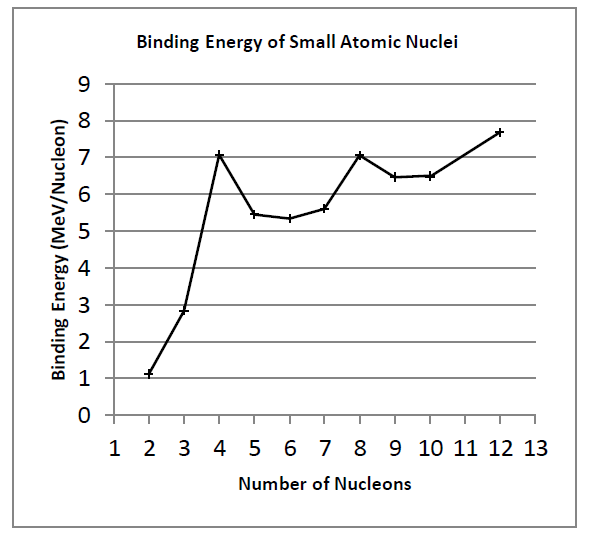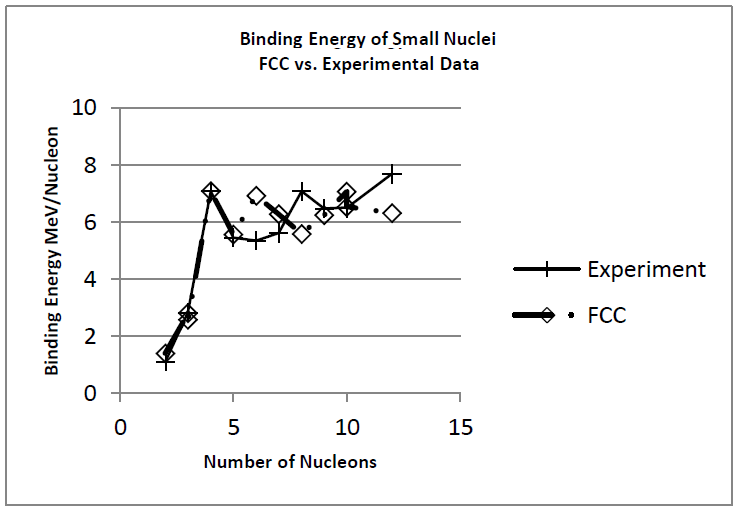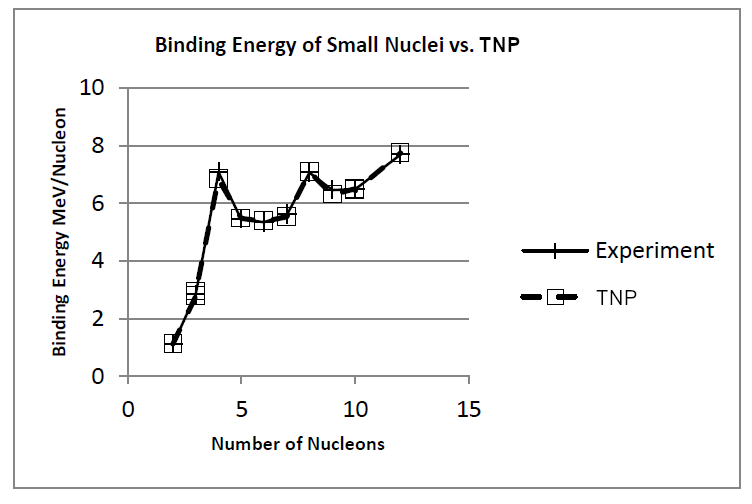Mysteries can hang around in physics for decades. One of these is the 90-year-old Case of the Baffling Binding Energy.
When two particles, like a proton and a neutron, fuse together into a nucleus, they lose a bit of mass. This lost mass has the name Mass Defect. Because of our old friend E = m ∙ c2, this loss of mass is also known as the Binding Energy.
As each proton or neutron is added to a nucleus, there is a little more Binding Energy released. But it’s not (as one might expect) the same amount each time. Here is how nucleons, i.e., protons & neutrons, make different nuclei of different atoms as they are added:
| Atom | Protons | Neutrons |
| Deuterium | 1 | 1 |
| Tritium | 1 | 2 |
| Helium 3 | 2 | 1 |
| Helium | 2 | 2 |
| Helium 5 | 2 | 3 |
| Lithium | 3 | 3 |
| Lithium 7 | 3 | 4 |
| Beryllium | 4 | 4 |
| Beryllium 9 | 4 | 5 |
| Beryllium 10 | 4 | 6 |
| Boron | 5 | 5 |
| Carbon | 6 | 6 |
If we divide the total Binding Energy released to form each of these nuclei by the number of particles in each we get the following very strange curve:

The sawtooth nature of this curve has baffled physics for 90 years. Undaunted, physicists have made a few attempts to explain this.
The first idea was proposed in 1929 by George Gamow. By modelling each nucleon as a drop of liquid, he was able to come up with the following Liquid Drop Model (LDM):

As a match to the data the shape is great but the absolute fit to the data is pretty poor. The absolute error is 55% but the correlation with the data (that is, how well the model matches the shape of the curve) is pretty good at 0.991.
The next advance took a long time, until in the 1990’s Norman Cook put forth the Face-Centered Cubic model. In this model, the nucleon formed the same pattern as a Face-Centered Cubic crystal structure. This gave:

Here we see a much better fit tot he data, only 11% absolute error, but the fit to the shape of the curve is pretty bad, resulting in correlation of only 0.915.
The New Physics model of the Binding Energy curve is 7 times better fit to the data:

Here the absolute error is only 1.4% and the correlation is 0.999. This is 7 times better than the FCC model, a 700% improvement.
This extraordinary advance is a result of The New Physics models of the proton and the neutron.